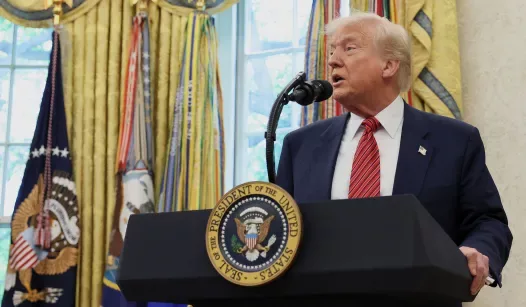The relationship between the presidency and the Federal Reserve has always been a complex one, but recent developments have thrown this dynamic into uncharted territory. As former President Donald Trump engages with the Federal Reserve, the legal framework surrounding presidential authority to dismiss Federal Reserve governors remains ambiguous and contentious.
Historically, the Federal Reserve operates with a degree of independence from the executive branch, designed to insulate monetary policy from political pressures. This independence is crucial for maintaining economic stability, as it allows the Fed to make decisions based on economic indicators rather than political expediency. However, the question of whether a sitting president can remove a Fed governor has emerged as a significant point of contention.
The Federal Reserve Act, which established the central bank in 1913, provides some guidance on this issue, stating that governors can only be removed for “cause.” However, the definition of “cause” is not explicitly defined, leading to a legal gray area. This lack of clarity has resulted in varying interpretations and has left the door open for potential conflicts between the presidency and the Fed.
Trump’s approach to the Federal Reserve has been characterized by a mix of admiration and criticism. Throughout his presidency, he frequently expressed dissatisfaction with the Fed’s interest rate policies, arguing that they were stifling economic growth. His public comments often suggested a desire for more aggressive monetary easing, which raised concerns about the potential for political interference in what is supposed to be an independent institution.
As Trump re-enters the political arena, the implications of his stance on the Federal Reserve are significant. If he were to regain the presidency, questions about his ability to influence or dismiss Fed governors would inevitably resurface. This could lead to a broader debate about the independence of the Fed and its role in the U.S. economy.
The legal uncertainties surrounding the dismissal of Fed governors also raise important questions about accountability and governance. Advocates for a strong, independent central bank argue that any attempts to politicize the Fed could undermine public trust and lead to erratic economic policies. Conversely, some argue that a president should have the authority to remove governors who are not aligned with their economic vision.
In navigating this complex landscape, it’s essential for both policymakers and the public to understand the implications of potential changes to the relationship between the presidency and the Federal Reserve. As discussions around economic policy continue to evolve, the balance between political influence and central bank independence will remain a critical issue for the future of U.S. economic governance.
As we look ahead, the intersection of politics and monetary policy will likely become an increasingly prominent topic of discussion. Whether it’s through the lens of Trump’s potential influence or broader trends in governance, the ongoing dialogue will shape the future of the Federal Reserve and its role in the American economy.
